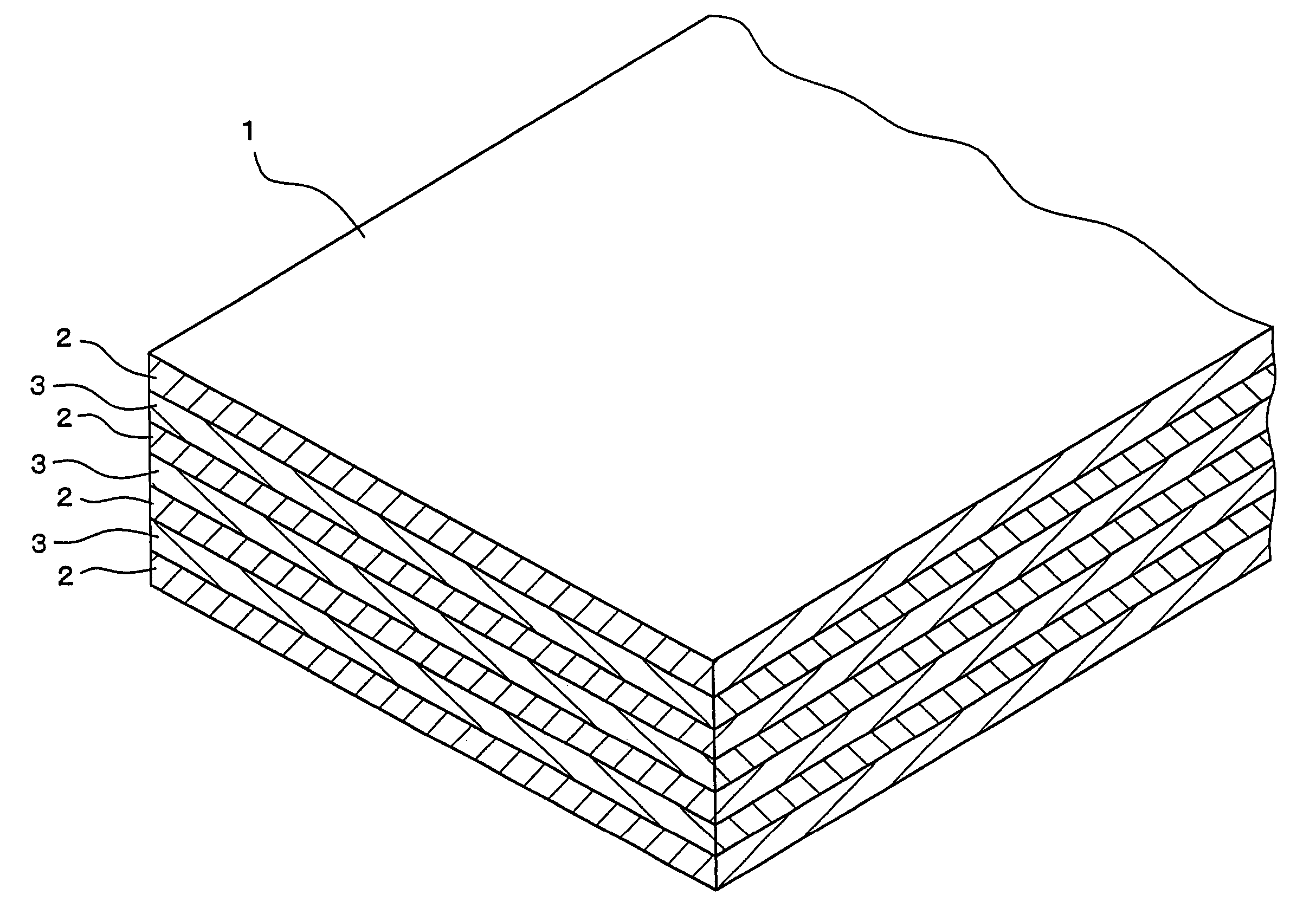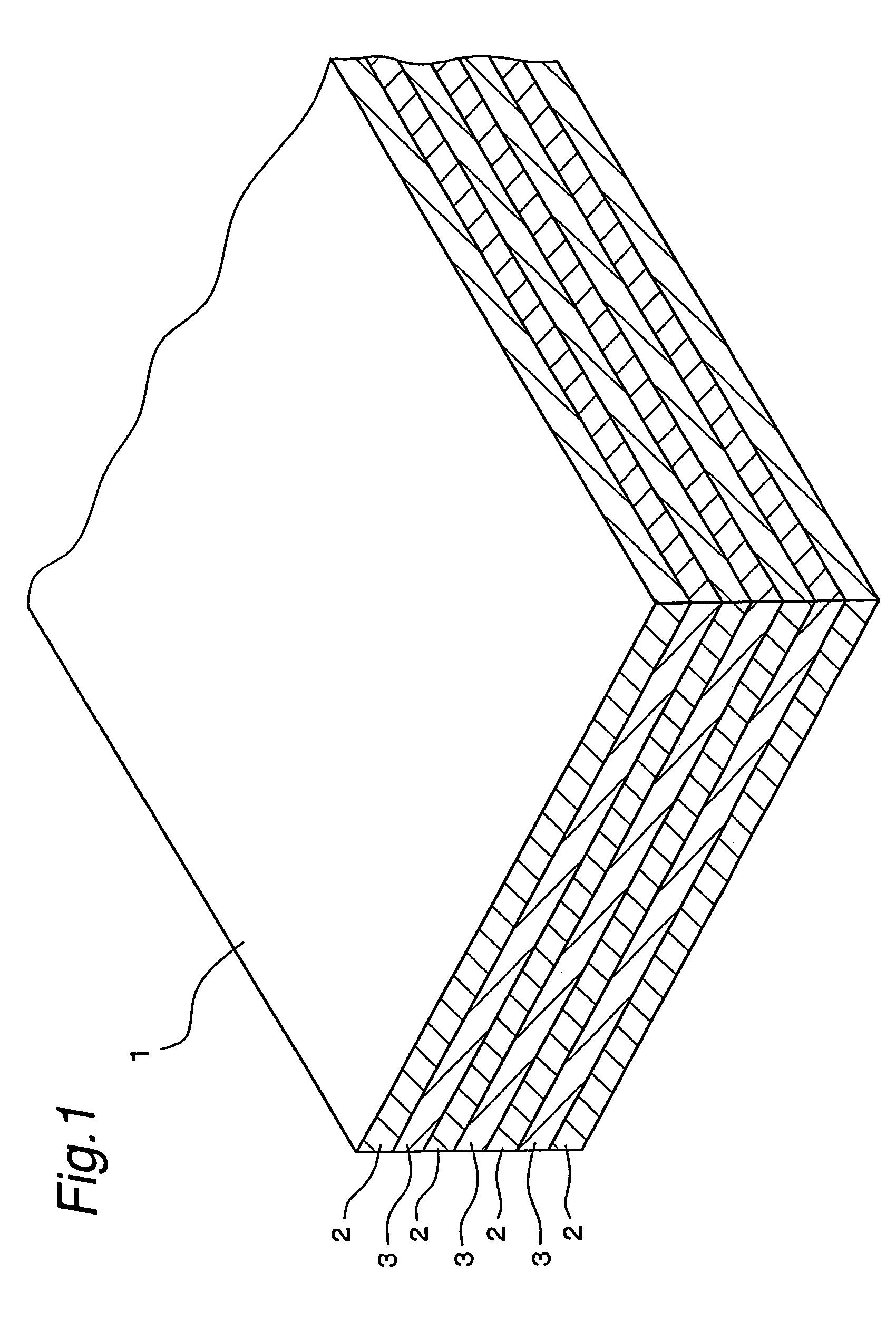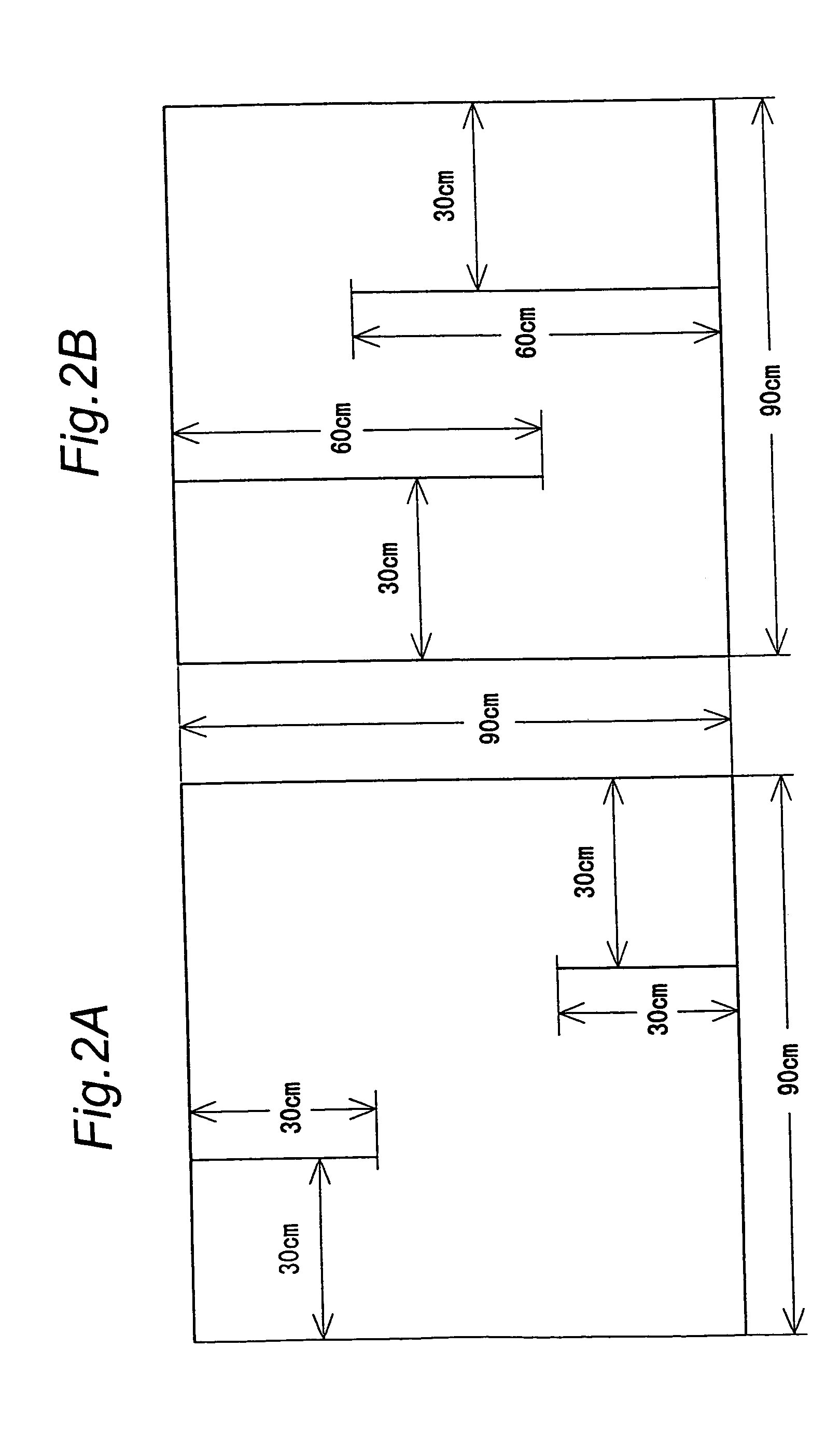Laminated composite wooden material and method of manufacturing material
a technology of laminated composite wood and manufacturing method, which is applied in the direction of manufacturing tools, building repairs, and joining of wood veneers, etc., can solve the problems of time and labor, difficult work, and difficulty in ensuring so as to improve the bending strength, the desired bending strength and nail holding power, and the weight of the weigh
- Summary
- Abstract
- Description
- Claims
- Application Information
AI Technical Summary
Benefits of technology
Problems solved by technology
Method used
Image
Examples
example 1
[0039]Rubber wood from the Sumatra in Indonesia was peeled using a rotary lathe to a thickness of 2.5 mm to obtain a veneer with a length of 90 cm and a width of 90 cm. Next, the veneer was dried in a drier to reduce the moisture content to 5 to 8%. Then such veneers were prepared and designated as specimens 1 to 10.
(Experiment (1))
[0040]On each of the veneers designated as specimens 1 to 10, a mark was put on the portion where the largest warp occurred between both cut ends, and the magnitude of the camber was measured. Next, a cup with a bottom diameter of 63 mm was placed on the mark, and a weight was put in the cup; then, the weight with which the camber was reduced to 1 mm or less and remained stationary was measured as a value representing the internal stress contained in the veneer. The measured results are shown in FIG. 6. In FIG. 6, specimen 1-1 and 2, for example, show the internal stresses being exerted on the respective cut ends of the specimen 1.
(Experiment (2))
[0041]On...
example 2
[0055]Veneers respectively made of falcataria (F), rubber wood (R), Japanese larch (L), and meranti (M), each 2.5 mm in thickness, were stacked in the order shown in FIG. 7, and were bonded together using an alkaline phenol-based adhesive (type I / FC0 / insecticide-contained) to construct a laminated composite lumber measuring 28 mm in thickness, 910 mm in width, and 1820 mm in length, from which specimens 1 to 9 were cut. Each of the specimens 1 to 9 had outer dimensions that conform to the JAS test method for structural laminated veneer lumber.
[0056]In FIG. 7, the veneers in parentheses are those that were stacked with their fiber direction oriented at right angles to the fiber direction of the other veneers. Various measurements were made on the specimens 1 to 9. The measured results are shown in FIG. 8. In FIG. 8, bending strength (0 degree) refers to the bending strength of each specimen when the specimen is bent along the fiber direction, while bending strength (90 degrees) refer...
example 3
[0060]Veneers respectively made of rubber wood (R) and falcataria (F), each measuring 2.5 mm in thickness, 40 mm in width, and 1200 mm in length, were stacked one on top of another in alternating fashion, with the top and bottom surfaces each covered by a veneer of rubber wood, and a total of 13 veneers were bonded together using an alkaline phenol-based adhesive (type I / FC0 / insecticide-contained). The thus constructed laminated composite lumber, measuring 29 mm in thickness, 40 mm in width, and 1200 mm in length, was cut into three pieces, producing three test specimens each having a thickness of 29 mm, a width of 40 mm, a length 350 mm, and an average density of 566 kg / m3.
PUM
| Property | Measurement | Unit |
|---|---|---|
| specific gravity | aaaaa | aaaaa |
| specific gravity | aaaaa | aaaaa |
| oven-dry specific gravity | aaaaa | aaaaa |
Abstract
Description
Claims
Application Information
 Login to View More
Login to View More - R&D
- Intellectual Property
- Life Sciences
- Materials
- Tech Scout
- Unparalleled Data Quality
- Higher Quality Content
- 60% Fewer Hallucinations
Browse by: Latest US Patents, China's latest patents, Technical Efficacy Thesaurus, Application Domain, Technology Topic, Popular Technical Reports.
© 2025 PatSnap. All rights reserved.Legal|Privacy policy|Modern Slavery Act Transparency Statement|Sitemap|About US| Contact US: help@patsnap.com



